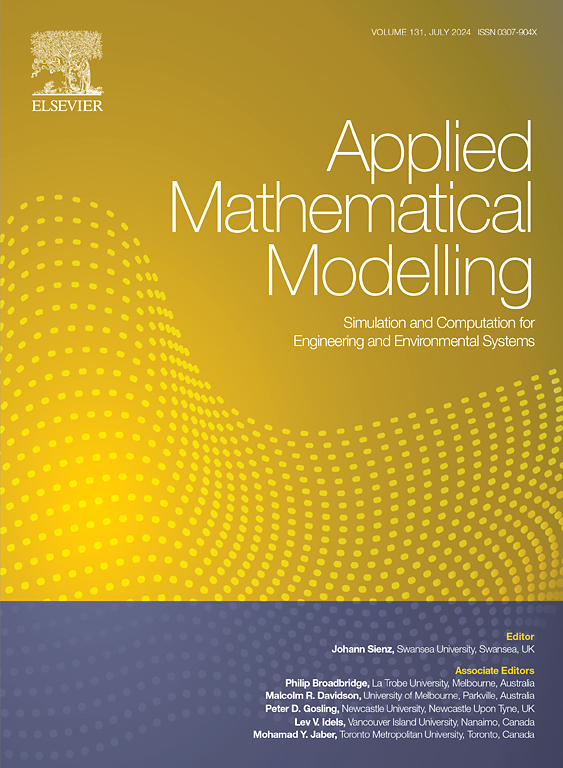从模拟数据到实验数据的转子不平衡位置识别的改进迁移学习法
IF 4.4
2区 工程技术
Q1 ENGINEERING, MULTIDISCIPLINARY
引用次数: 0
摘要
在对高速运转的柔性转子进行动平衡研究时,确定转子的不平衡位置一直是一项重大挑战。准确识别不平衡位置可使低速动平衡成为高速方法的可行替代方案,最终降低成本并提高运行效率。虽然利用有限标记数据的深度学习技术在识别不平衡位置方面取得了可喜的成果,但收集足够数量的标记数据以有效训练诊断模型仍然是一项巨大的挑战。为解决这一问题,我们提出了一种预适应迁移学习(PATL)方法,通过频域相关分析进行样本重建。该技术通过将模拟动态模型数据的见解转移到实验数据集,促进了转子不平衡位置的跨域深度转移识别。与现有方法相比,所提出的方法在不平衡位置识别的准确性和通用性方面都有显著提高。这项研究的新颖之处在于引入了预适应迁移学习,有效地减少了实验数据和模拟数据之间的差异,从而提高了模型的识别能力。实验结果表明,所提出的方法能在各种运行条件下实现有效的平衡结果。本文章由计算机程序翻译,如有差异,请以英文原文为准。
An improved transfer learning method for rotor unbalance position identification from simulated data to experimental data
In the study of dynamic balancing for flexible rotors operating at high speeds, determining the unbalanced position of the rotor has consistently posed significant challenges. Accurate identification of the unbalanced position enables low-speed dynamic balancing to serve as a viable alternative to high-speed methods, ultimately reducing costs and enhancing operational efficiency. Although deep learning techniques utilizing limited labeled data have shown promising results in identifying unbalanced positions, the challenge of gathering a sufficient amount of labeled data for effectively training diagnostic models remains substantial. To address this issue, we propose a Pre-Adaptive Transfer Learning (PATL) approach that employs sample reconstruction through frequency domain correlation analysis. This technique facilitates cross-domain deep transfer recognition of rotor unbalanced positions by transferring insights from simulated dynamic model data to experimental datasets. Compared to existing methodologies, the proposed approach demonstrates significant improvements in both the accuracy and generalization of unbalanced position identification. The novelty of this research lies in the introduction of pre-adaptive transfer learning, which effectively minimizes the disparity between experimental and simulation data, thereby enhancing the model's recognition capabilities. Experimental results indicate that the proposed method achieves effective balancing outcomes across various operating conditions.
求助全文
通过发布文献求助,成功后即可免费获取论文全文。
去求助
来源期刊

Applied Mathematical Modelling
数学-工程:综合
CiteScore
9.80
自引率
8.00%
发文量
508
审稿时长
43 days
期刊介绍:
Applied Mathematical Modelling focuses on research related to the mathematical modelling of engineering and environmental processes, manufacturing, and industrial systems. A significant emerging area of research activity involves multiphysics processes, and contributions in this area are particularly encouraged.
This influential publication covers a wide spectrum of subjects including heat transfer, fluid mechanics, CFD, and transport phenomena; solid mechanics and mechanics of metals; electromagnets and MHD; reliability modelling and system optimization; finite volume, finite element, and boundary element procedures; modelling of inventory, industrial, manufacturing and logistics systems for viable decision making; civil engineering systems and structures; mineral and energy resources; relevant software engineering issues associated with CAD and CAE; and materials and metallurgical engineering.
Applied Mathematical Modelling is primarily interested in papers developing increased insights into real-world problems through novel mathematical modelling, novel applications or a combination of these. Papers employing existing numerical techniques must demonstrate sufficient novelty in the solution of practical problems. Papers on fuzzy logic in decision-making or purely financial mathematics are normally not considered. Research on fractional differential equations, bifurcation, and numerical methods needs to include practical examples. Population dynamics must solve realistic scenarios. Papers in the area of logistics and business modelling should demonstrate meaningful managerial insight. Submissions with no real-world application will not be considered.
 求助内容:
求助内容: 应助结果提醒方式:
应助结果提醒方式:


